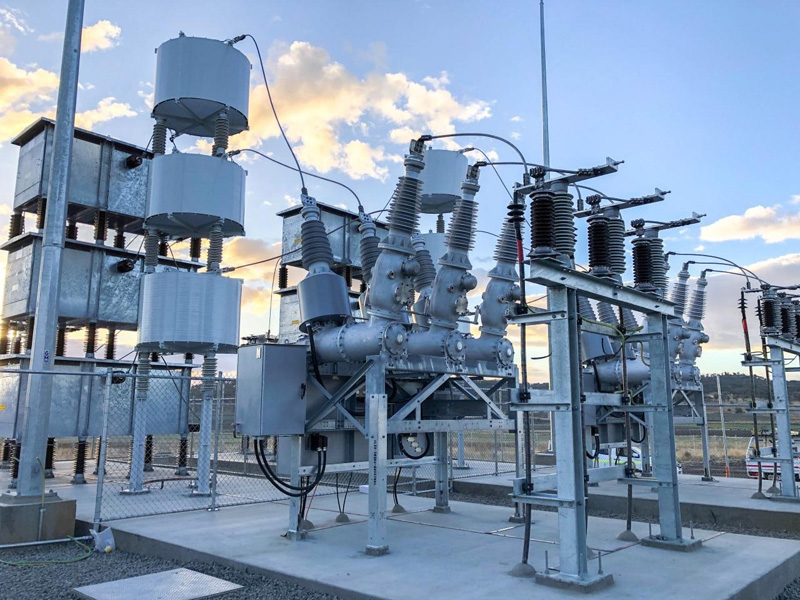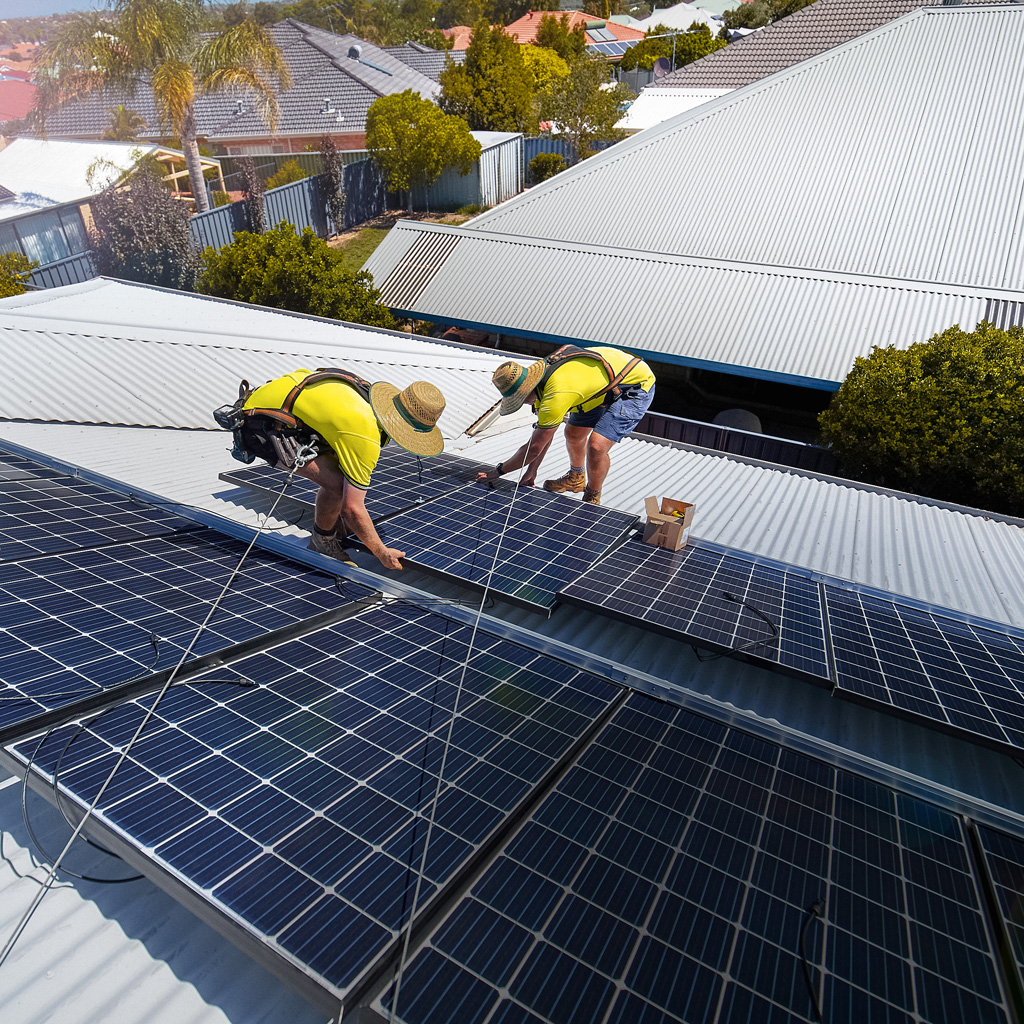High penetration of residential rooftop solar in Australia is causing overvoltage issues across an increasing number of networks. Voltage regulation distribution transformers can help with this problem.
Australia, the land of the sun—in fact, around 3,300 hours of sunshine are recorded every year in Perth, Western Australia where the headquarters of network operator Western Power is located. This is certainly a figure that could make Western Europeans green with envy: By comparison, MR’s headquarters in Regensburg, Germany register around just 1,600 hours of sunshine annually.
It’s no wonder then that Australia is currently the world leader when it comes to the amount of energy produced from photovoltaic (PV) systems. 2.3 million solar units are currently installed on Australian roofs, equating to an energy supply of close to 1 gigawatt—a figure which is set to account for an additional 150 MVA annually in the coming years.

GOOD FOR THE CLIMATE, BAD FOR THE GRID
For Mariza Butler, Senior Engineer Grid Transformation at Western Power, this is first and foremost good news: “We want as many people as possible to use photovoltaics, to supply the energy to the grid, and in doing so to do their bit for climate protection,” she explains. But unfortunately, there’s a problem: If the proportion of power flowing back into the lowvoltage grid from private prosumers increases to a point where the power flows excessively in the reverse direction, the voltage in the grid also increases.
This is the case during the Australian spring and autumn in particular when mild temperatures mean that airconditioning isn’t required as often, people spend a lot of time outdoors, and demand for electricity is lower. Yet these circumstances are of little interest to the sun — it continues to shine on the solar panels unabated. A certain amount of fluctuation in low voltage (LV) is normal, but there are limit values which must be observed. For European grid operators, there is a leeway of 58 volts (230 V, +/10 %) while for Western Power, on the other side of the world, the margin is just 29 volts (240 V, +/6 %).

AUSTRALIA BENEFITS FROM VRDTS
In Germany, MR started to focus on this problem back in 2012, as the use of dispersed sources of energy had meant that the medium and lowvoltage grids in many industrialized nations increasingly needed some attention. So how could we bring voltage stability to distribution grids faced with volatile energy supplies?
MR’s answer: the ECOTAP® VPD® onload tapchanger. This tap changer for voltage regulation distribution transformers (VRDTs) is already in its third generation and enables dispersed voltage reg ulation in the distribution grid to be achieved. Previously, distribution transformers couldn’t be regulated, but this regulation is necessary to compensate for voltage fluctuations in local grids.
“We want as many people as possible to use photovoltaics, to supply the energy to the grid, and in doing so to do their bit for climate protection.”Mariza Butler, Senior Engineer Grid Transformation at Western Power
At a working group meeting of Cigre Australia for dispersed generation (C6) back in 2016, Dr.Ing. Thomas Smolka, the Managing Director of Reinhausen Australia, gave a presentation on this very topic. It was from this event that Western Power considered trialling VRDTs as a potential longterm solution and it therefore agreed to a pilot project with MR which would see eleven selected polemounted transformers equipped with the ECOTAP® VPD®s. Installation began in November 2019, with field trials continuing since then. “Initial results look promising in regulating the voltage across the LV feeders within the prescribed limits,” says Butler.

A SET-AND-FORGET SOLUTION
The ECOTAP® VPD® is installed on the highvoltage winding of the transformer and includes a measuring device that monitors both current and voltage on the lowvoltage winding and automatically changes the tap ratio if the voltage fluctuations move beyond the predefined limits.
“It was important for us to find a setandforget solution to our problem,” explains Butler—in other words, a solution that only needs to be configured once and can then be left alone and does not require constant drain on technical resources to restudy the issue. The sheer distance across which networks in Australia traverse means that a centralized solution is not possible. “With around 1.5 million distribution transformers across Australia, 90 % of which are polemounted, this would cause problems,” states Dr. Thomas Smolka.
The automatic regulation function of Tapcon Dynamic Setpoint Control (TDSC) particularly appealed to Western Power: With the aid of voltage and current measurements, the magnitude and direction of real and reactive power flows can be determined and the position of the on-load tap changer is then automatically adjusted.
As a result, voltage drops and the higher line voltages experienced when large amounts of PV power are supplied can be compensated. In the first test run, the VRDTs were still linked via the DNP3 communication protocol to the control room (CONTROL PRO), which enables the data to be read out and the system to be controlled remotely. “We will see whether this will continue to be necessary in the future,” says Butler.
Der ECOTAP® VPD®
More and more private homes feeding electricity from renewable energy sources into the grid leads to voltage fluctuations. The ECOTAP® VPD® turns inflexible distribution transformers into intelligent regulating transformers that balance fluctuations in medium voltage and respond to feed-in and load changes on the low-voltage side. The ECOTAP® VPD ® is also compact, meaning that distribution transformers do not need to be any larger.
Western Power
The distribution and transmission network service provider is based in Perth and serves more than 2 million customers across an area of 254,920 Km sq across the South West region of Western Australia.
FIT FOR A MORE SUSTAINABLE FUTURE
The test period is set to run until June 2021 but Western Power is hopeful with the results achieved to date: “With the regulating ECOTAP® VPD®, we have potentially found an effective lever to use in our suite of solutions to help us manage our network,” states Mariza Butler.
So the company can rest easy in the knowledge that it is well equipped to deal with a future in which electric cars and home-based energy supplies are sure to create further new challenges for electricity grids. “We are totally committed to doing our bit for climate protection,” states Butler. “And the VRDTs using MR technology make it much easier for us to achieve this goal.”
Did you know?
Every photovoltaic installation does more than just produce electricity. It also substantially contaminates the grid. This results in grid harmonics and instabilities in maintaining the voltage that would have a substantial influence on a secure power supply through photovoltaics. In Australia in particular, non-reactive solar energy is generated in accordance with restrictive feed-in policies for operators of photovoltaic systems.

This is where MR – Power Quality, with specialists in the business of solutions, comes in. MR grid-study and planning services result in customized harmonic filter circuit systems which, in cooperation with our partner energySEA Pty Ltd in Australia, have been successfully integrated into a wide variety of photovoltaic projects. A typical application for harmonic filter circuits is 33 kV C filter circuits in a C‑type configuration with a dead-tank switch, air-core reactors, resistors and capacitors.
Every photovoltaic system is subject to changed connection conditions, which automatically results in different harmonic filter concepts. Accordingly, harmonic filter circuits are not ready-made systems. They always require the expertise of MR Power Quality specialists.
You can find more information about Reinhausen Power Quality solutions here.
YOUR CONTACT

Want to know more about the ECOTAP® VPD® in Australia?
Dr.-Ing. Thomas Smolka is here to help:
T.Smolka@au.reinhausen.com
